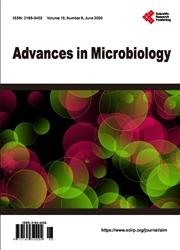Biodiversity and Distribution of Aspergillus and Their Toxins in Maize from Western and Eastern Regions of South Africa
引用次数: 4
Abstract
Aspergillus species and aflatoxins production are more prevalent during times of high heat and drought. In South Africa, there is frequent occurrence of drought as a result of climate change. The aim of this study was to investigate the biodiversity and distribution of Aspergillus species with their corresponding toxins in maize from main maize producing regions of South Africa; [Western Regions (WR) and Eastern Regions (ER)]. One hundred and twen-ty-three (64 from WR and 59 from ER) maize samples from the two agro-climatic regions in South Africa were analyzed using cultural, molecular and analytical methods. Across agro-climatic regions, Aspergillus species contaminated about 62% of the maize samples, while Aspergillus flavus was the most prevalent (47.15%) followed by Aspergillus fumigatus (4.69%) while the least was Aspergillus parasiticus (0.81%). The Western Regions showed a higher distribution of varieties of Aspergillus species compared to the Eastern Regions. Aflatoxins contaminated only 27.64% of the maize samples with a mean total aflatoxin concentration of 2.40 μg/kg which is below the South Africa’s set standard for total aflatoxin in food (5 μg/kg). About 10.57% of the samples produce aflatoxins above the 5 μg/kg permissible limit for total aflatoxin in foods. The ratio of toxigenic to atoxigenic strains of Aspergillus flavus was generally low in all the regions of South Africa. This study could aid policy makers to make informed decisions in developing remediation strategies for Aspergillus mycotoxins.南非西部和东部地区玉米曲霉及其毒素的生物多样性和分布
曲霉种类和黄曲霉毒素的产生在高温和干旱时期更为普遍。在南非,由于气候变化,干旱经常发生。本研究旨在调查南非主要玉米产区玉米中曲霉种类及其毒素的生物多样性和分布;[西部地区(WR)和东部地区(ER)]。采用培养、分子和分析方法对来自南非两个农业气候区的123份玉米样品(64份来自WR, 59份来自ER)进行了分析。在不同的农业气候区,玉米样品中有62%的样品被曲霉污染,其中黄曲霉污染最多(47.15%),其次是烟曲霉(4.69%),寄生曲霉污染最少(0.81%)。西部地区曲霉种类分布明显高于东部地区。黄曲霉毒素污染玉米样品的比例仅为27.64%,平均黄曲霉毒素总浓度为2.40 μg/kg,低于南非食品中黄曲霉毒素总浓度设定标准(5 μg/kg)。约10.57%的样本的黄曲霉毒素含量超过食物中黄曲霉毒素总量的允许限量5微克/公斤。在南非所有地区,黄曲霉产毒菌株与产氧菌株的比例普遍较低。本研究可以帮助决策者在制定曲霉毒素的修复策略时做出明智的决策。
本文章由计算机程序翻译,如有差异,请以英文原文为准。
求助全文
约1分钟内获得全文
求助全文

 求助内容:
求助内容: 应助结果提醒方式:
应助结果提醒方式:


